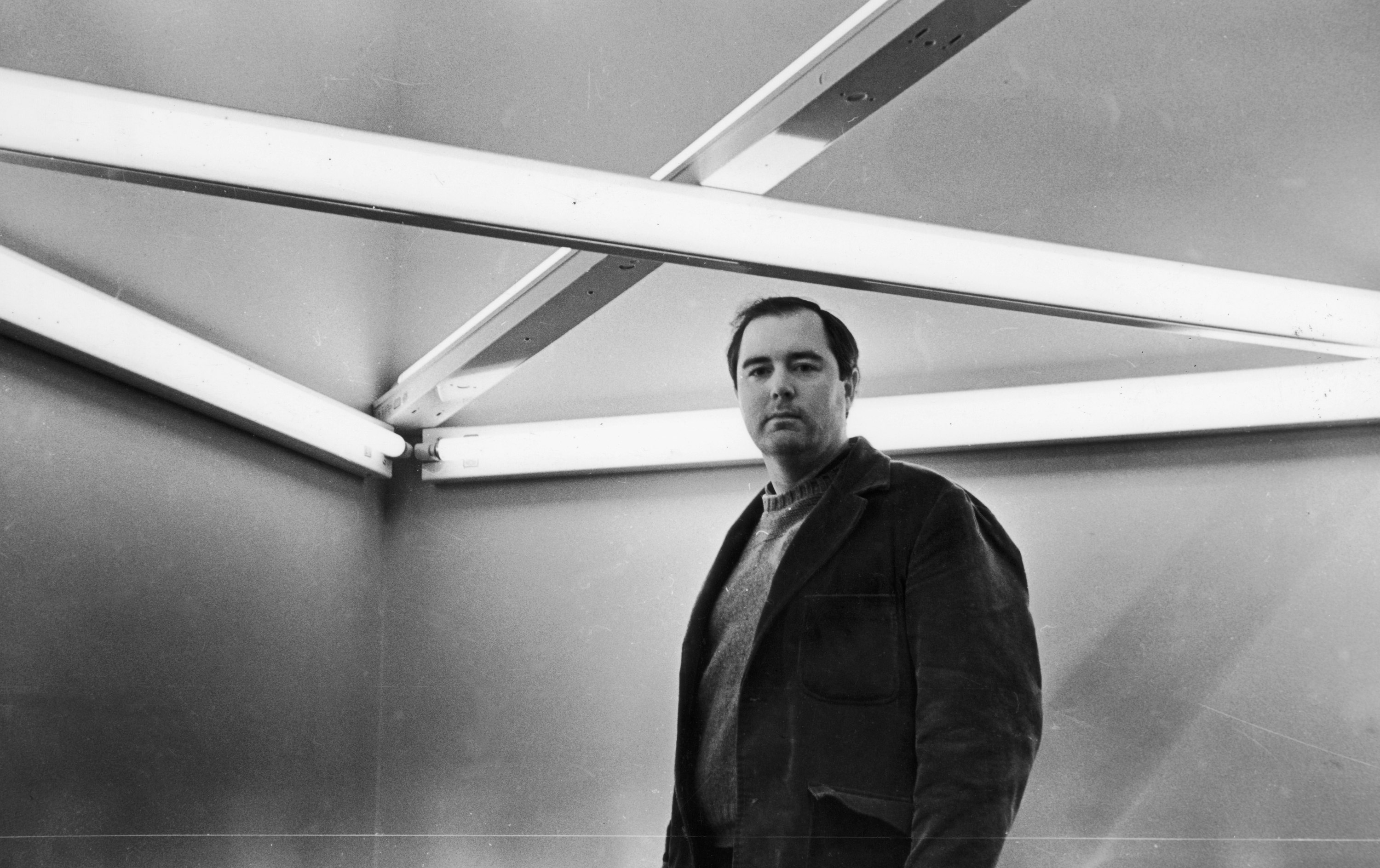Dan Flavin

© ADAGP, Paris 2017 pour les oeuvres de l’artiste. Courtesy Fondation Louis Vuitton. Crédit photo : Jérémie Souteyrat
- Place
-
Espace Louis Vuitton Tokyo
-
Omotesando Bldg 7F 5-7-5 Jingumae Shibuya-ku
-
Tokyo 150-0001
- Phone
-
+81 3 3515 0855
Following Pierre Huyghe’s monographic exhibition, the Espace Louis Vuitton Tokyo honors American artist Dan Flavin and continues its presentation of previously unseen works from the Fondation Louis Vuitton’s permanent collection. This exhibition was conceived and produced under the artistic direction of Fondation Louis Vuitton, as part of its distinguished “Hors-les-murs” program, displayed in the Espaces Culturels Louis Vuitton throughout the world, in Tokyo, München, Venezia and Beijing.
Dan Flavin first used light between 1961 and 1963, with his Icons series – eight square canvasses with electric and fluorescent bulbs attached – leading to the “epiphany” moment in his career when he created The Diagonal of May 25, 1963: a long fluorescent strip with a gold-colored bulb positioned on a wall at a 45-degree angle. From then on, he worked exclusively with pre-fabricated fluorescent tubes that came in four sizes and ten different colors (blue, green, pink, yellow, red, ultraviolet and four shades of white), arranging this limited repertoire without alteration or ornamentation.

© ADAGP, Paris 2019 © Louis Vuitton / Jérémie Souteyrat
Flavin’s work rejects all religious and mystical interpretations of light, expressing itself solely as a reference to its own presence – it is “situational” in nature, focusing on the physical space occupied by the artwork and the viewer’s interaction with it. During the 1960s and 70s, Flavin began to create more complex configurations such as simple structures, corner installations and his “barred corridors”. The scale of his works increased to inhabit every nook and cranny of the spaces, stretching from floor to ceiling and along walls, picture rails and corridors. At the same time the artist explored different variations and intensities of color, which he adjusted depending on the length, number and arrangement of tubes, placed vertically and horizontally as well as diagonally. From the 1970s onwards, the architectural settings Flavin worked on became increasingly monumental, leading him to focus on site-specific installations. Throughout his career, Flavin’s highest ambition was to offer sensory experiences of space by transforming it and enriching it using simple interactions of light.
The Espace Louis Vuitton Tokyo showcases seven works of Dan Flavin’s from the Fondation Louis Vuitton collection: Untitled (1963), Alternate Diagonals of March 2 (to Don Judd) (1964), “Monument” for V. Tatlin (1964-65), “Monument” for V. Tatlin (1967), “Monument” for V. Tatlin (1969), “Monument” for V. Tatlin (1970), and Untitled (to Alex and Nikki) (1987), thus paying tribute to the pioneering oeuvre of this iconic artist.
the artist
Dan Flavin
In 1963, Dan Flavin began working with the medium of light: functional fluorescent tubes exhibited in their original state, without alteration or decoration.
Flavin took drawing and painting classes at Columbia University and discovered the work of Robert Motherwell, Jackson Pollock and Jasper Johns. Between 1961 and 1963, he used lighting in his series Icons, comprising square structures with incandescent and fluorescent bulbs attached to their sides.
On 25 May 1963, he placed a 244-cm gold-coloured fluorescent light on the wall of his workshop at a 45-degree angle. Titled the "Diagonal of Personal Ecstasy (the Diagonal of May 25, 1963)”, it represented the moment of “epiphany” in his career.
Dan Flavin became one of the representatives of minimalist art alongside Donald Judd, Sol LeWitt and Carl Andre, and took part in the movement’s seminal shows of the 1960s: Black, White and Grey (Wadsworth Museum, Hartford) in 1964, and Primary Structures (Jewish Museum, New York) in 1966.
His work favours the repetition of elementary forms and the rejection of representation, illusionism and metaphor. Its only reference is to reality, context, and the spectator’s perception. Flavin’s first solo show, which featured only fluorescent tubes, was held at the Green Gallery in New York in 1964. It was a chance for the artist to experiment in situa with the way light alters the physical perception of a space.
Starting with his series Monuments for V. Tatlinn (1964-1990), the fluorescent tube became an element of construction, allowing the artist to scale up the proportions, combinations and dimensions of his installations. During the 1970s, Flavin worked in increasingly monumental settings, and created many site-specific installations, some temporary.


